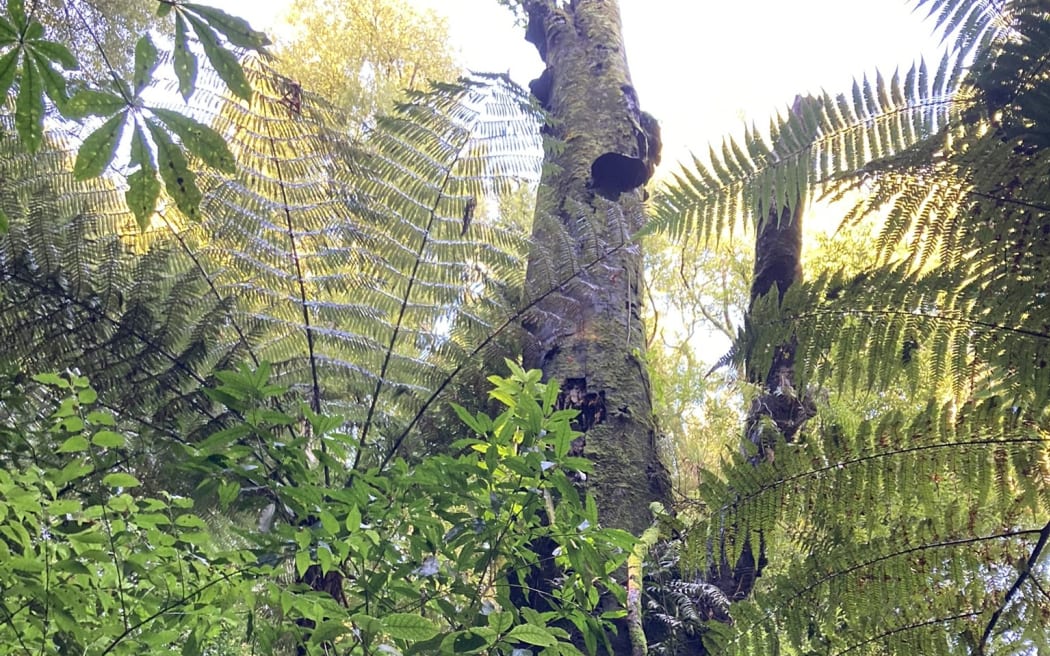
Bracket fungi spotted on the skyline in native bush at Maungatautari Scenic Reserve Photo: Liz Garton
Follow Our Changing World on Apple Podcasts, Spotify, iHeartRADIO or wherever you listen to podcasts.
Could the answer to the global problem of antibiotic resistant bacteria be in our backyard?
It’s a question being given serious time and consideration by Dr Siouxsie Wiles and Dr Bevan Weir, with help from fungi enthusiasts around Aotearoa.
The problem
The World Health Organization describes antimicrobial resistance as one of the top global public health threats, responsible for an estimated 1.27 million deaths in 2019.
“Life is always fighting, so bacteria will find a way to fight against antibiotics,” says Dr Bevan Weir, head of Mycology and Bacteriology Systematics Research at Manaaki Whenua / Landcare Research. “They’ll evolve chemistry to cut the molecule and render it inactive or other forms of resistance – they can change their cell walls and pump out the antibiotic more.”
“They’re always finding a way to evolve around antibiotics, so we do need to find more,” he says.
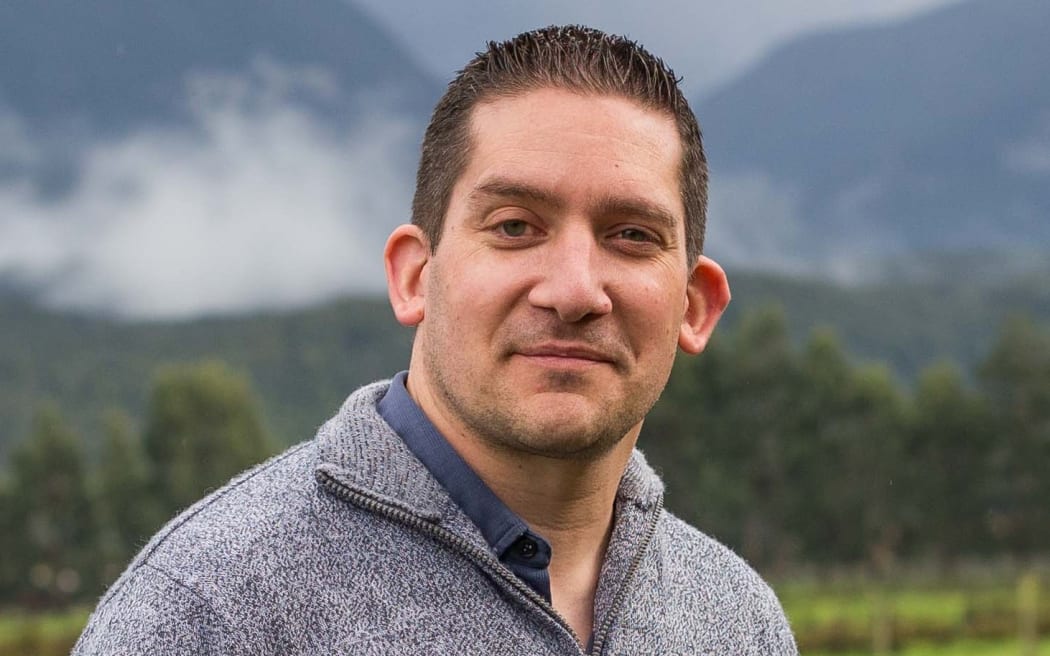
Bevan Weir Photo: Bevan Weir
The foray
On a cool but sunny autumn morning in May 2023, Liz Garton joined The Fungal Network of New Zealand’s annual foray at Maungatautari Sanctuary Mountain. The 2024 fungal foray is taking place now, from 12–18 May in Havelock.
Each year the foray is held in autumn when the fungi fruits, and it can be spotted.
Each fungus begins as a miniscule spore. From that grows the mycelium, a network of fungal strands, like string, and from those you get the fruiting body. The fruiting body is the bit we see sprouting out of the ground, or whatever the organism is growing on – what we call a mushroom.
Bevan says one of the main reasons for the foray is to take samples for the national culture collection (which he curates) and to try identify and describe what is found.
“That’s one of the big questions we don’t know; what fungi is native and what are not,” he says. “We have probably only described or identified about a third of the fungal biodiversity in New Zealand.”
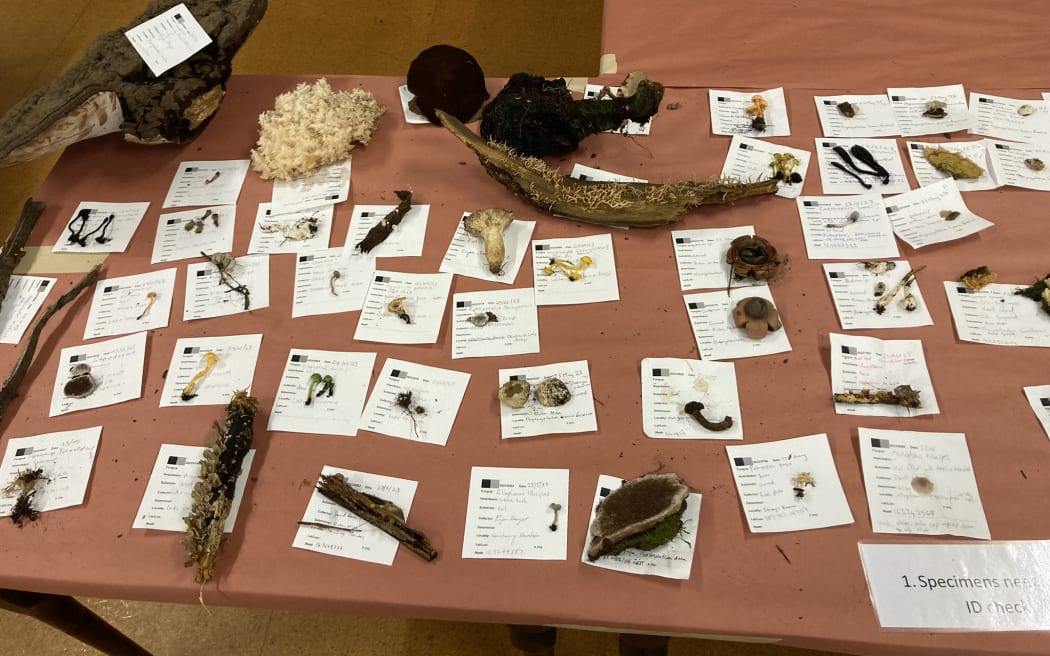
Some of the foray finds on display Photo: Liz Garton
With that unidentified diversity comes diversity of chemistry too. A fungus growing on a piece of wood needs to defend itself and compete with bacteria.
“So it will be producing an antibacterial to kill that bacteria and we might be able to discover what that is and use it for us in a medical context,” says Bevan.
The (possible) solution
This brings us to the work Bevan is doing with microbiologist Dr Siouxsie Wiles at the University of Auckland.
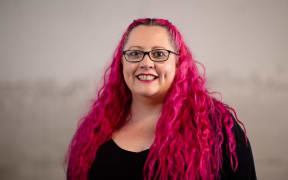
Dr Siouxsie Wiles Photo:
Siouxsie has been taking samples from the national collection – some of which were collected during past forays – and growing them up to see if they have any active antibiotic chemicals.
They’ve made a good start, but the possibilities seem endless.
“There were 10,000 fungi in the collection when we started, I don't know how many get added every year, but the collection is growing faster than we can screen it.”
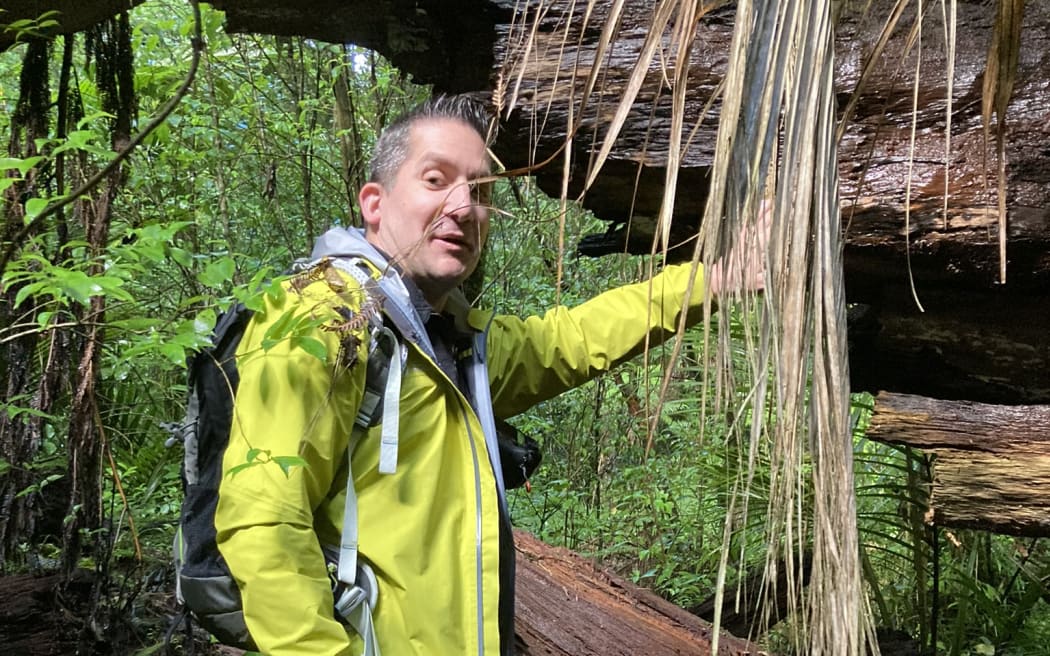
Dr Bevan Weir on the Fungal Foray 2023. Photo: RNZ
And the actual process of discovering new antibiotics is complex.
“So the process first is to take the fungi and grow them in different ways, because fungi will produce different compounds depending on what kind of environment they're in,” explains Siouxsie, “If we grow them in media that's really nutrient rich, they'll produce something quite different to if we grow them in media where they're actually quite starved of nutrients.”
Once they have a useable sample, they put them against their test bacteria, which has been genetically altered to be bioluminescent.
“We can either measure the bacteria as light, so if [the bacteria] don't produce any light, then that tells us the fungi’s killing them.”
Most of the fungi they have studied are active under some condition, so once they have identified how active and under what conditions, they move onto stage two.
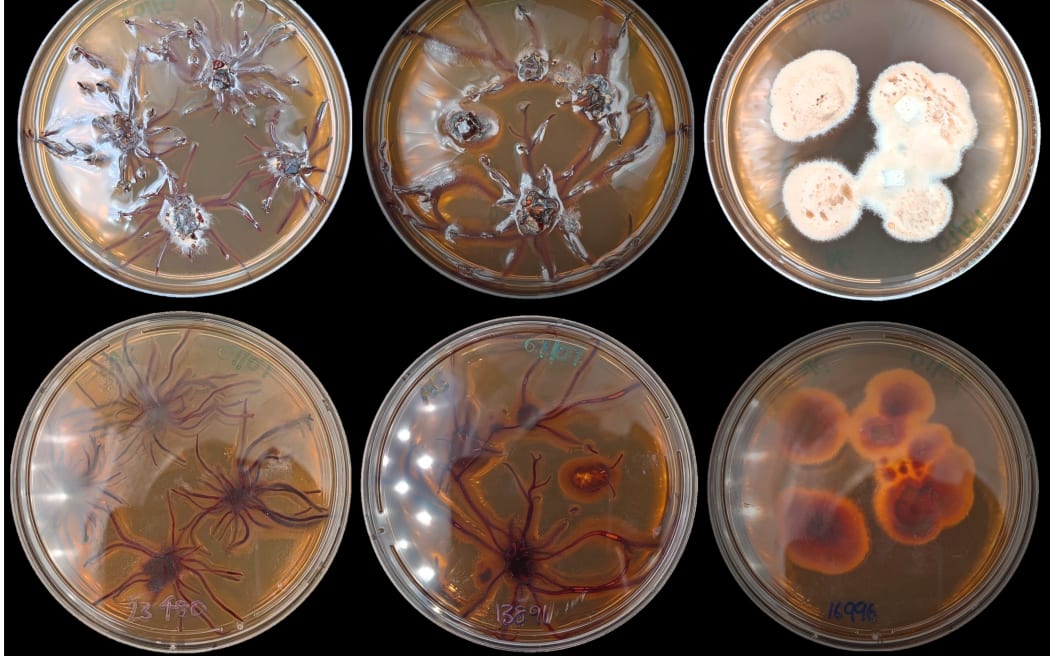
Armillaria fungi grown for testing against bioluminescent bacteria Photo: Shara van de Pas
This involves making a liquid extract out of the fungi and separating out all the molecules and compounds to find out which ones, if any, are active against the bacteria.
If at this point anything looks particularly promising, the team brings in chemists to try to isolate the important compounds.
“It is a slow process,” says Siouxsie. “We had one we were very excited about, because it was killing a bacteria called E. coli, which is a big issue and one that we desperately need antibiotics for. But I think that compound ended up being really unstable, so it’s not going to make a good drug.”
While it’s frustrating, the moments of hope and potential discovery keeps them going.
“E. coli and Klebsiella, for example, are very difficult to kill. So as soon as we get an initial hit against them, I mean, we all just get so excited,” says Siouxsie. “That kind of keeps us keeps us motivated to carry on.”
Listen to the full episode to learn more about the foray and the process used to identify potential novel antibiotics.
To learn more:
- Claire Concannon visited the New Zealand Fungarium and the culture collection that Bevan looks after in 2022.
- Our Changing World has previously looked at The looming crisis of antimicrobial resistance
- If you want to learn more about how Siouxsie uses bioluminescence to identify superbugs you can listen to this episode from 2011.
- And if you want to tag along on another Fungal Foray, Our Changing World was there in 2009.

